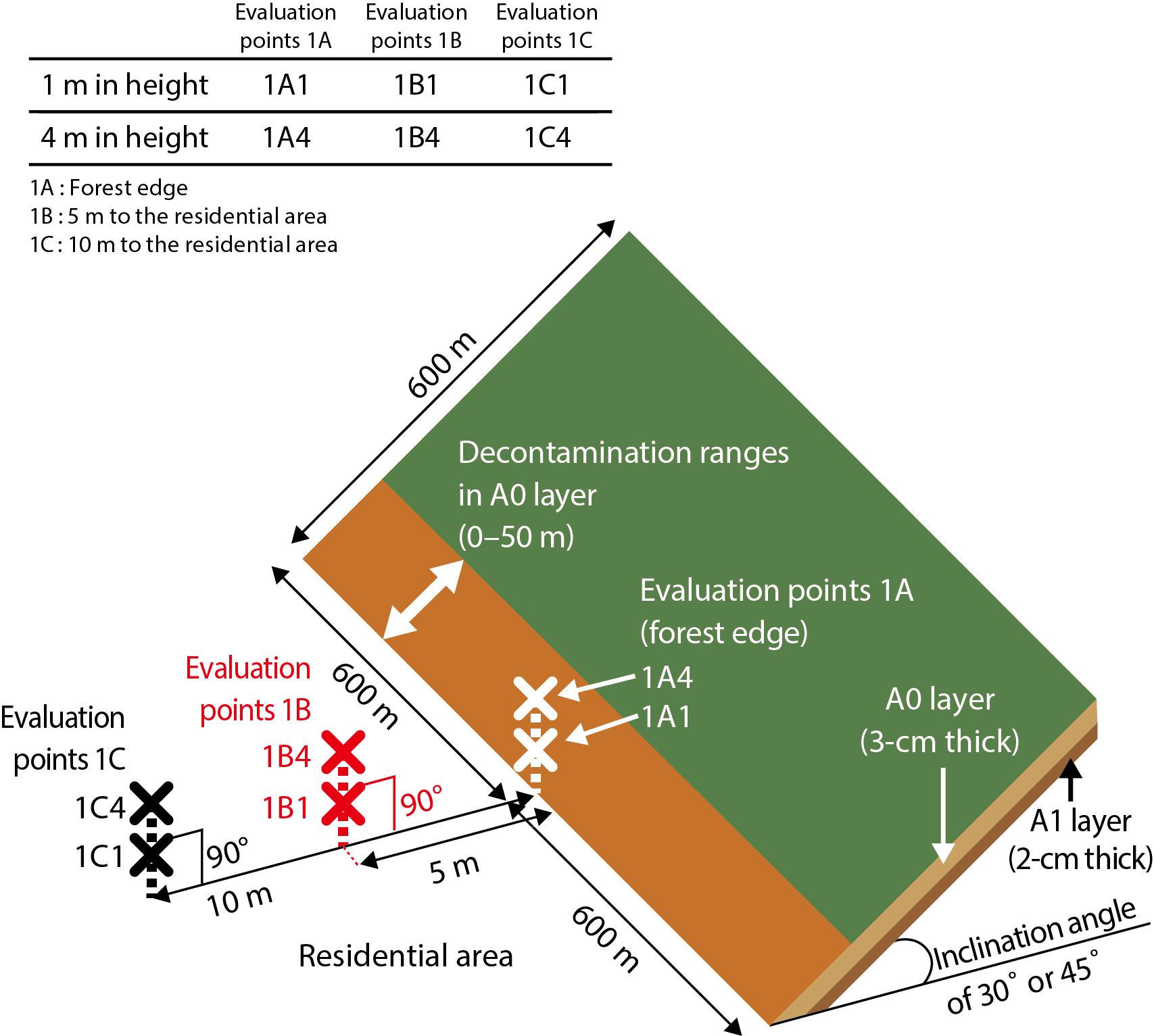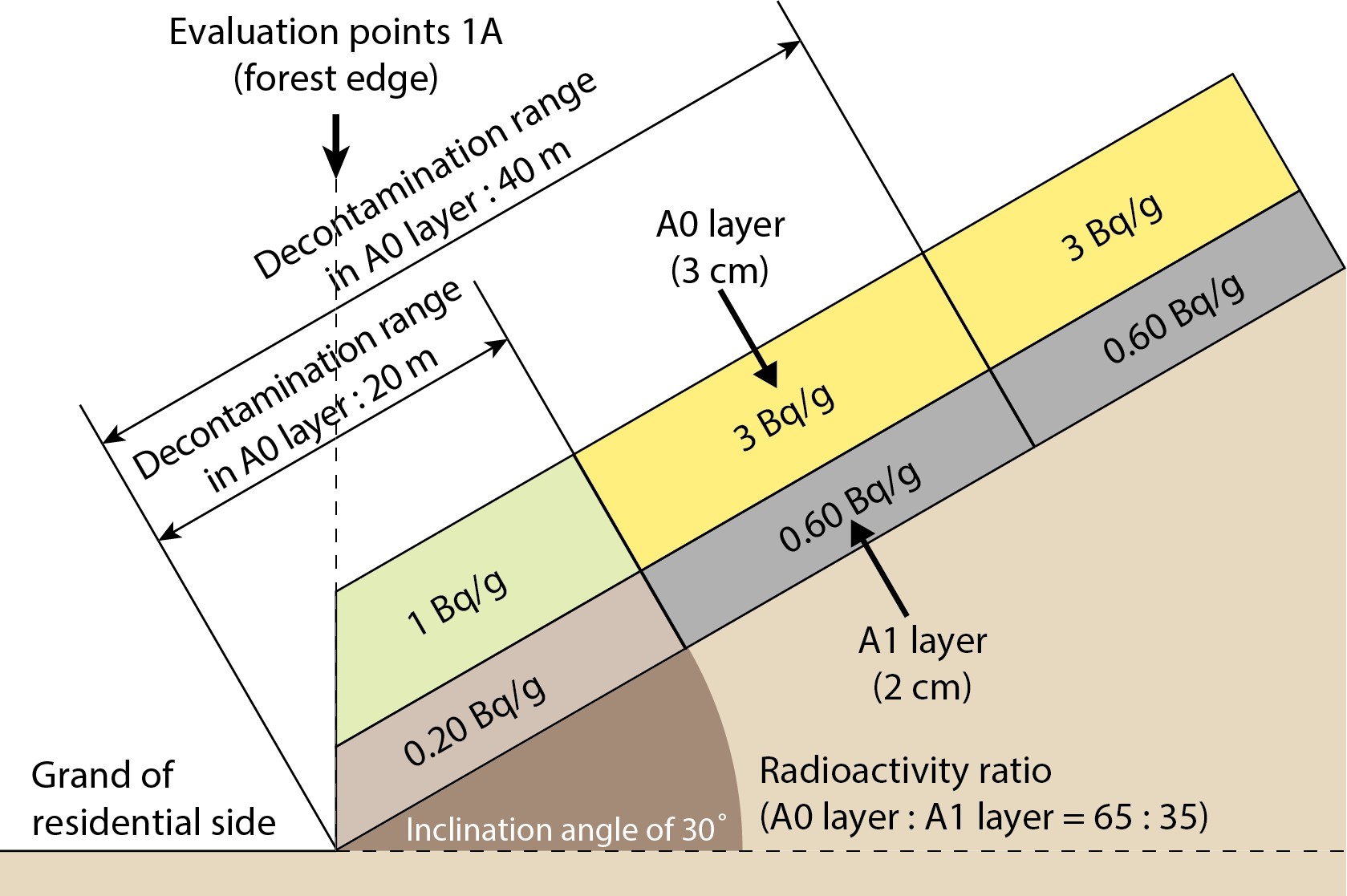
Fig.1-36 Evaluation system when there is a single slope of forest soil

Fig.1-37 Cutaway view showing a case where a large amount of radioactive Cs is present in the A0 layer and the contamination has a planarly non-homogeneous source distribution
In the accident at the TEPCO’s Fukushima Daiichi NPS, forests were polluted by radioactive-cesium (Cs) release. Radioactive Cs remains in forest soil. The decontamination of such Cs is expected to reduce the air-dose rate. However, if decontamination is applied to the forest as a whole, a huge amount of soil will have to be removed. Therefore, there will be a tremendous burden on its management and expenses. In addition, such decontamination increases the possibility that forest soil will leak out, damaging the multifaceted functions of forests such as water-source protection and disaster prevention. Thus, as a method of forest decontamination, the Forestry Agency has recommended gradually removing the surface layer of fallen leaves and forest soil.
In this research, the A0 and A1 layers were assumed to be radiation sources. The A0 layer is the surface of the forest soil including sedimentary organic materials such as fallen leaves. The A1 layer contains the soil. The air-dose rate in a residential area was analyzed using the three-dimensional transport calculation code MCNP on the condition that only the A0 layer was decontaminated. The shapes of radiation sources were given as one or three forest slopes. Fig.1-36 shows the shape of the radiation source for a single forest slope. The three forest slopes were assumed for the case of a house surrounded by three forests. For each radiation-source shape, cases where an inclination angle of the forest soil and the amount of radioactive Cs in the soil were changed–and also a case where the contamination of the forest soil was planarly non-homogeneous–were analyzed. For all of those cases, we analyzed the extent to which the air-dose rate at that point in the residential area was reduced when the range of the A0 layer was removed.
It was found that, even if the A0 layer was removed, the air-dose rate in the residential area (especially the second floor of the residence) was hard to lower compared with the forest edge, regardless of the number of slopes or the inclination angle.
Also, if there is more radioactive Cs in the A0 layer and the contamination is planarly homogeneous, it is effective to remove the A0 layer up to 20 m from the forest edge. But, for instance, as shown in Fig.1-37, in the case where the concentration of radioactive Cs included in the forest soil at over 20 m distant from the forest edge was tripled compared with its concentration included in the forest soil from the forest edge up to 20 m, the decontamination of the A0 layer from the forest edge up to 40 m was revealed to be needed to effectively reduce the air-dose rate in the residential area.
This simulation has made it possible to effectively determine the forest-decontamination method according to the distribution of contamination.